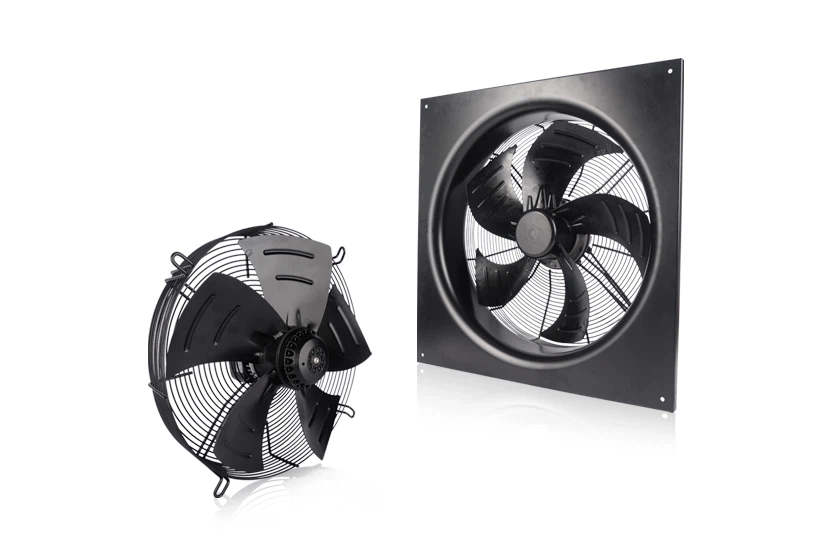Axial fans are critical components in a variety of applications, ranging from industrial cooling to residential ventilation. Their ability to move large volumes of air efficiently makes them indispensable in many environments. However, selecting the right axial fan for your specific needs requires careful consideration. Factors such as airflow requirements, environmental conditions, and operational efficiency all play a role in making the best choice. Here’s how to navigate this decision effectively.
Understand Your Airflow Requirements
One of the first steps in choosing an axial fan is understanding the airflow requirements for your application. Axial fans are designed to handle high-volume, low-pressure airflow, making them ideal for situations where air needs to move across a wide space rather than being compressed. Standard units of measurement for airflow include cubic feet per minute (CFM) and cubic meters per hour (m³/h), though these might vary according to system needs.
To determine the appropriate airflow, consider the size of the area, the desired ventilation rate, and the purpose of the fan. For example, industrial settings might require fans to cool machinery, while agricultural spaces may need ventilation to maintain optimal conditions for livestock or crops. You may choose a fan with the appropriate capacity by being aware of these factors.
Match The Fan To The Application
Axial fans come in various designs to suit specific applications. Standard axial fans are ideal for general ventilation needs, but some applications may demand specialised designs. For instance, tube axial fans are well-suited for ducted systems, while vane axial fans are better for high-efficiency airflow in industrial settings. Cooling towers, HVAC systems, and data centres often use specialised axial fans to ensure precise air management.
If you’re operating in environments with extreme temperatures, corrosive substances, or high humidity, you may need fans made from materials like stainless steel or aluminium to withstand harsh conditions. Additionally, explosion-proof axial fans are available for environments that require strict safety standards, such as chemical processing plants or mines.
Evaluate Noise Levels
While axial fans are efficient, they can produce noise, especially in high-capacity applications. Noise levels may not be a significant concern in industrial settings, but they can be disruptive in residential or office environments. To address this, look for fans with noise-dampening features or consider models with variable-speed motors that allow for quieter operation at lower speeds.
Assessing the noise level involves reviewing the fan’s decibel (dB) rating, which manufacturers typically provide. Opting for a fan with a lower dB rating can improve user comfort without compromising performance.
Consider Energy Efficiency
Energy efficiency is increasingly important when choosing any equipment, and axial fans are no exception. Fans with energy-efficient motors, such as those with brushless DC (BLDC) designs, can significantly reduce operational costs over time. Look for fans with certifications like Energy Star or those labelled as high-efficiency models.
Modern axial fans may also include smart features, such as automated controls and sensors that adjust the fan speed based on real-time conditions. These features can enhance energy efficiency and prolong the fan’s lifespan by preventing unnecessary wear and tear.
Factor In Installation And Maintenance
Another important factor is how simple it is to install and maintain. Axial fans are generally straightforward to install, but their size and mounting options may vary. Wall-mounted, ceiling-mounted, and freestanding models each have specific advantages depending on the application. Consider the available space and the fan’s weight when planning the installation.
Maintenance requirements also differ among models. Fans with accessible components, such as easily removable blades or motors, simplify routine cleaning and repairs. Selecting a fan with a durable design can further reduce maintenance needs, ensuring reliable performance over time.
Budget And Long-Term Value
While cost is an essential factor, it’s crucial to balance initial expenses with long-term value. Cheaper axial fans may save money upfront but could lead to higher maintenance costs or reduced efficiency over time. Conversely, investing in a high-quality fan with advanced features and robust materials can provide greater durability and operational efficiency, offering better value in the long run.
Seek Expert Guidance
Choosing the right axial fan can be complex, especially for specialised applications. Consulting with experts or manufacturers can help clarify technical specifications and ensure the selected fan meets all requirements. Numerous vendors provide specialised solutions that are suited to certain requirements, which can be very helpful in unusual or difficult settings.
Conclusion
Selecting the right axial fan requires a careful evaluation of several factors, including airflow needs, application type, noise levels, energy efficiency, installation considerations, and budget. By thoroughly assessing these elements, you can ensure the fan you choose provides optimal performance and longevity for your application. Whether you’re outfitting an industrial facility, enhancing HVAC efficiency, or improving residential ventilation, the right axial fan can make a significant difference in achieving your goals.
Keep an eye for more latest news & updates on Forbeszine!




